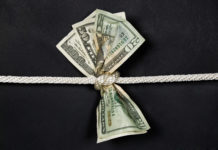 Subprime delinquencies 60 days or more past due on the secondary market rose to 5.76% in February, the highest they’ve been since 1996, according to Fitch Ratings Auto ABS Index.
Subprime delinquencies 60 days or more past due on the secondary market rose to 5.76% in February, the highest they’ve been since 1996, according to Fitch Ratings Auto ABS Index.
March delinquency figures have already come down slightly to 5.16% — 34 basis points higher than the same period the year prior, Hylton Heard, Senior Director at Fitch Ratings told Auto Finance News ahead of the release of the latest numbers. Still, the rise is odd given the strength of the economy.
“It’s interesting that [smaller deep subprime] issuers continue to drive delinquencies on the index in an unemployment environment of around 4%, low oil prices, low interest rates — even though they are rising — and a positive economic story overall,” Heard said.
The auto ABS market only represents roughly 10% of total industry outstandings where the rest is held by the big bank and captive issuers, Brian Ford, structured finance researcher at Kroll Bond Rating Agency Inc., told AFN. Still, the index can provide insights about the industry at large.
“The securitized universe is a small subset of the overall universe of auto loans, but it still gives you a pretty good indication of the health of the consumer,” Ford said. “However, now you more and more have that bias of deep-subprime issuers today who primarily use the securitization market as their primary source of funding.”
Delinquencies are expected to come down in the spring amid tax season but are likely to hover around 5% throughout the year, Heard said. Overall, he’s not concerned about the two main subprime issuers Fitch rates — Santander Consumer USA’s SDART and GM Financial’s AMCAR — but said there are a number of smaller issuers taking market share.
Ford attributes the rise in delinquency largely to an influx of deep subprime issuers that have taken a larger share of securitized outstandings as well as banks exiting the nonprime space in favor of simply maintaining funding through their depository institutions. For example, in 2017 deep subprime issuers with Fico scores of 515 and lower rose to 23% of issuances, compared with just 8% in 2013.
“Loss rates for the universe of securitized collateral pools has certainly increased but I would argue that investors are probably more protected today than they were back in 2006 and 2007 because you have more credit enhancement in the underlying transactions.” Ford told Auto Finance News. “The issuers we work with do a good job of pricing risk into the loans they are making. They may need to take into account the fact that lower credit quality borrowers have a higher chance of defaulting, so the APR on these loans will typically be higher than for higher quality borrowers in order for the companies to be profitable.”
Kroll Bond Rating Agency’s auto ABS index exhibits similar trends to the other indexes from credit rating agencies. Nonprime losses actually fell 15 basis points year over year in February, but Ford noted that losses tend to lag behind delinquencies.
Rising delinquencies can also be pinned to Santander Consumer USA’s increased issuances on the secondary market and its “relatively high” delinquency rates. The lender’s Drive platform made up 15% of Kroll’s non-prime index in February compared with 9% during the same period the year prior, the ratings agency noted in a report.
“The elevated delinquency rates are mainly attributable to a shift in our index issuer mix, making the trend less concerning than it appears,” the rating agency’s report stated.
Source : AutoFinanceNews











